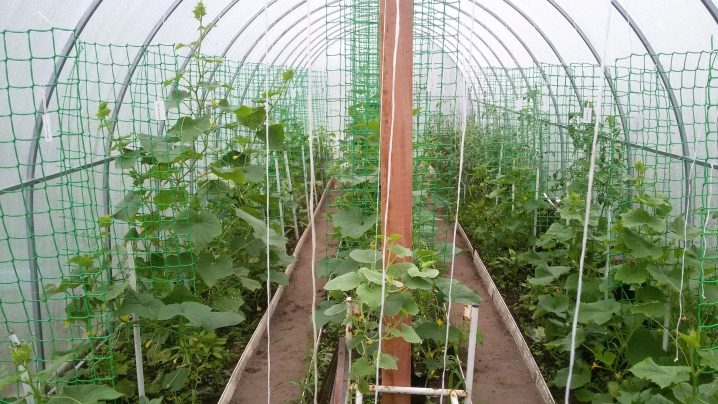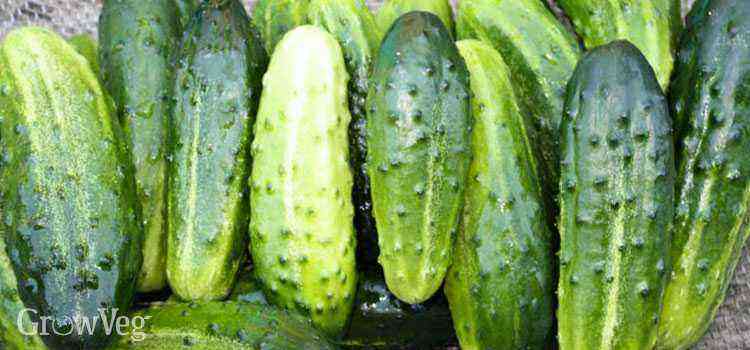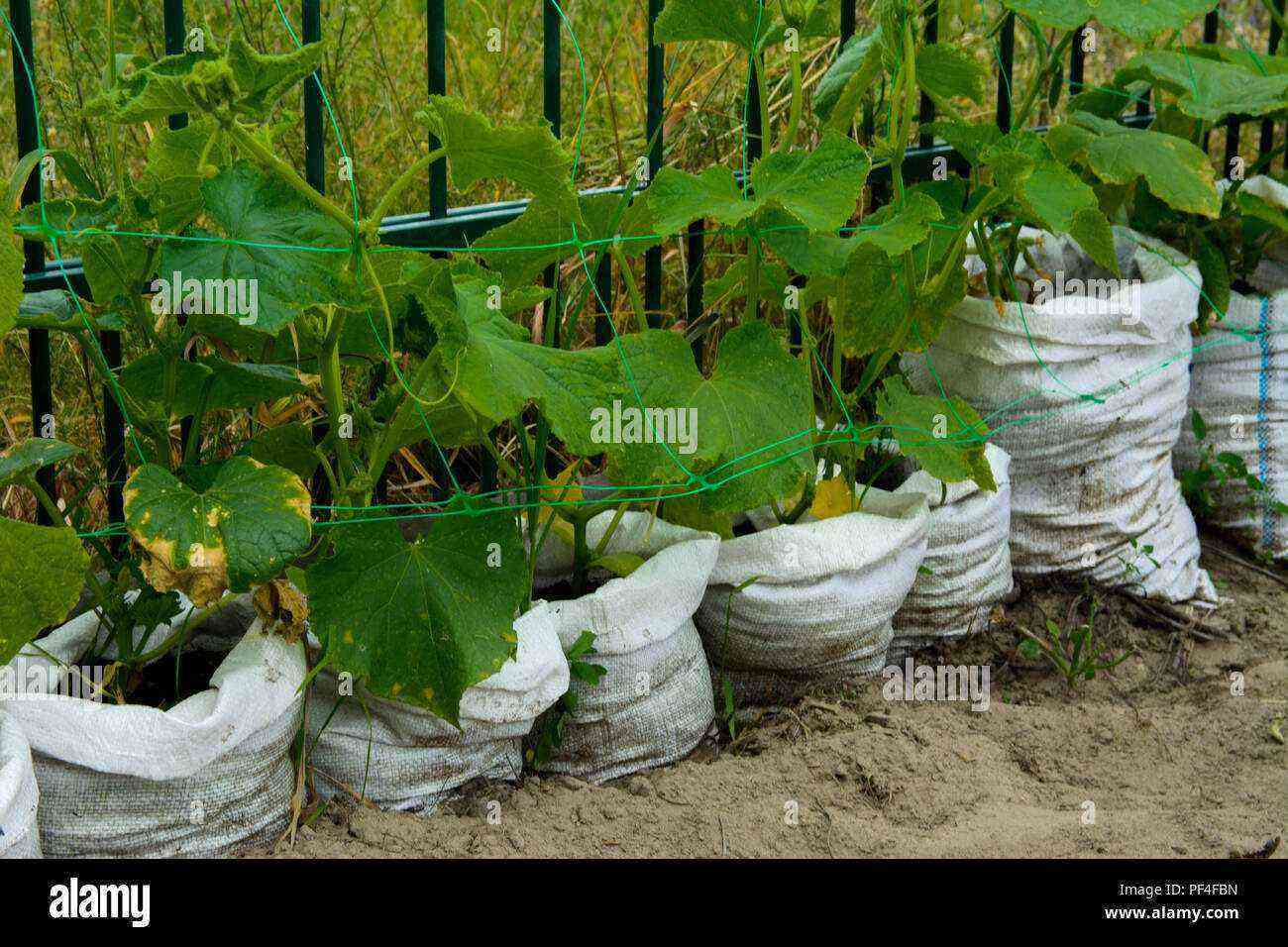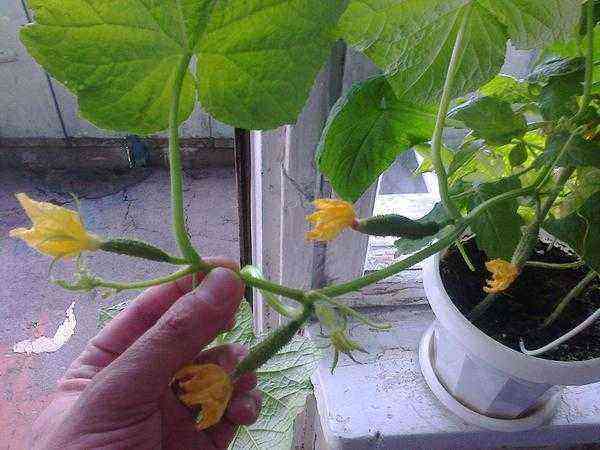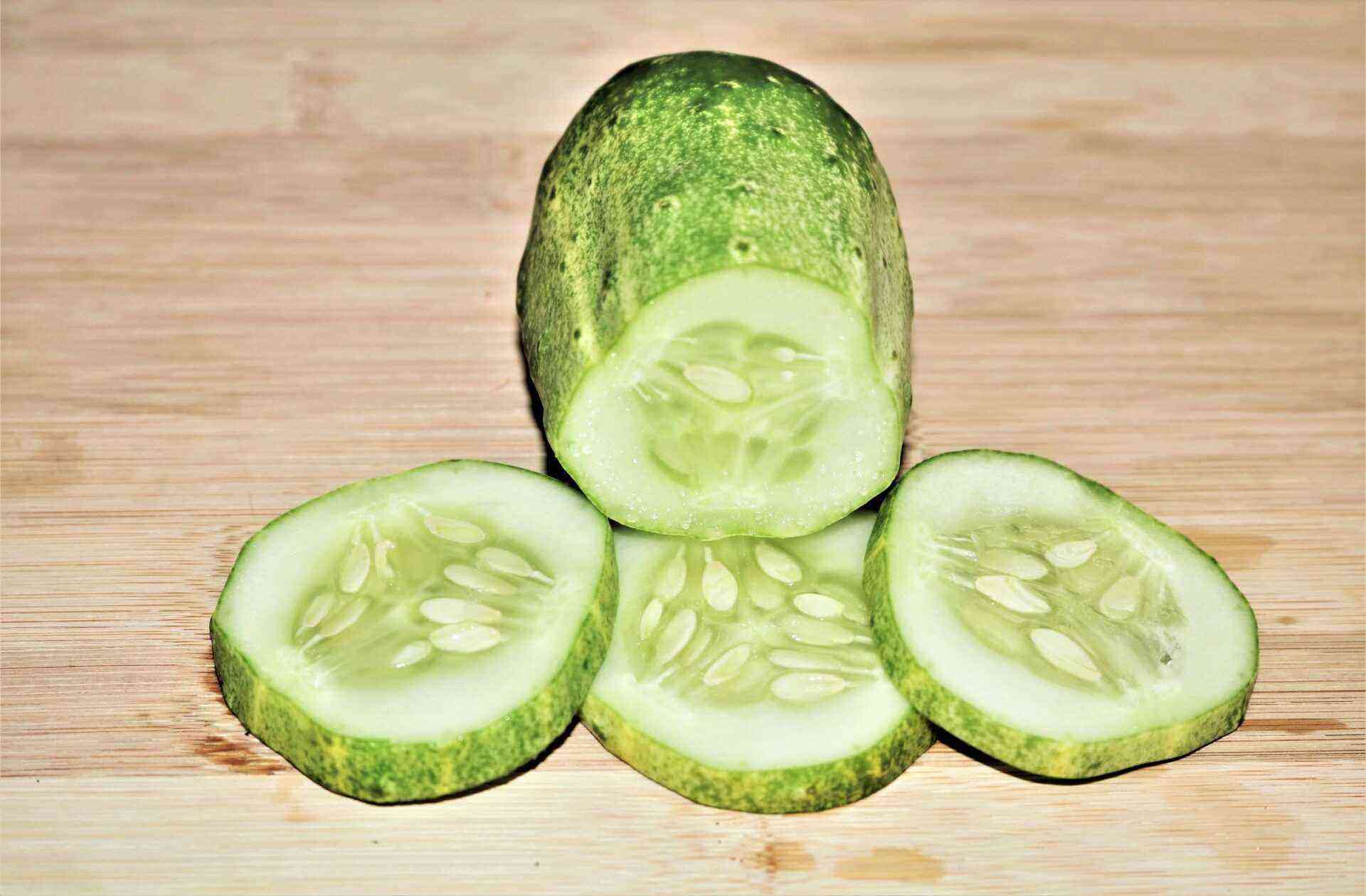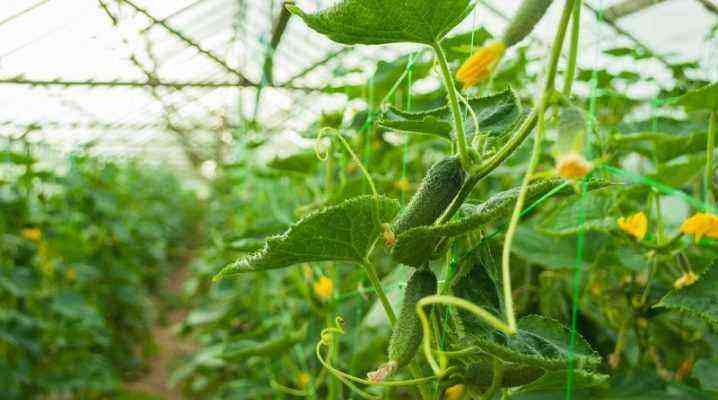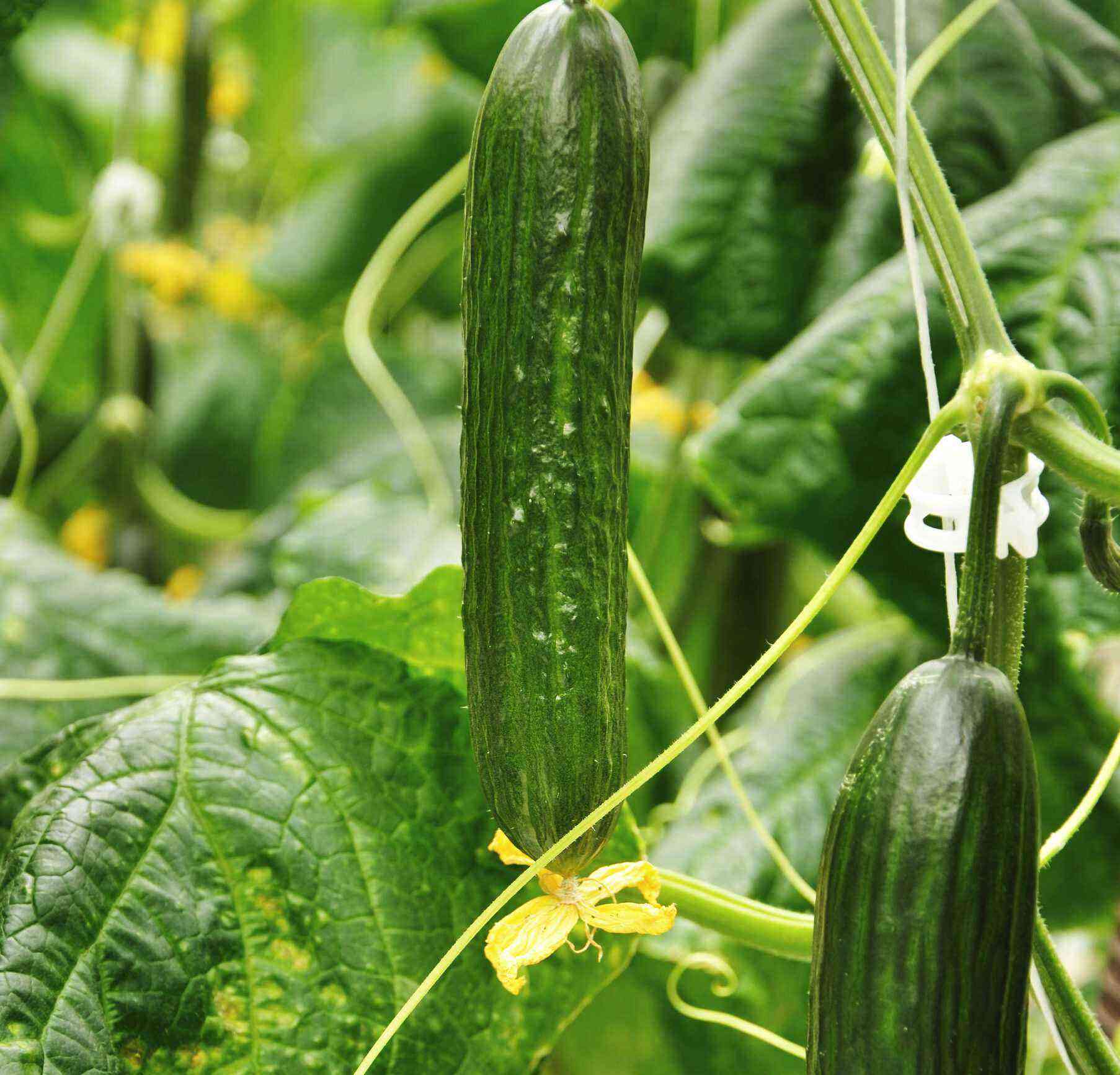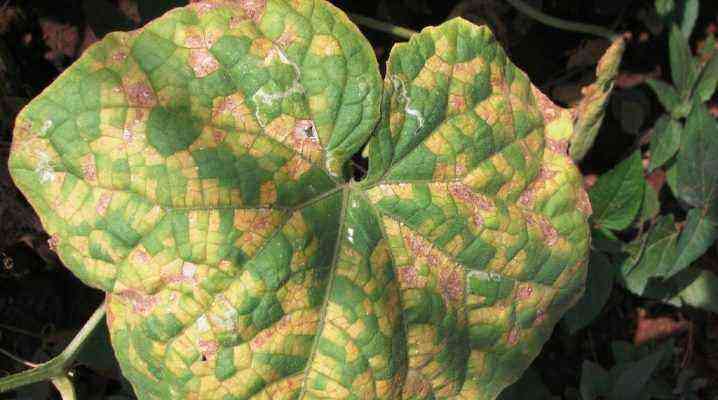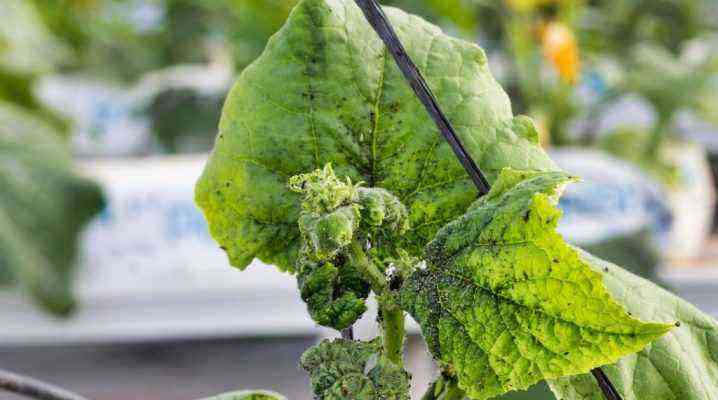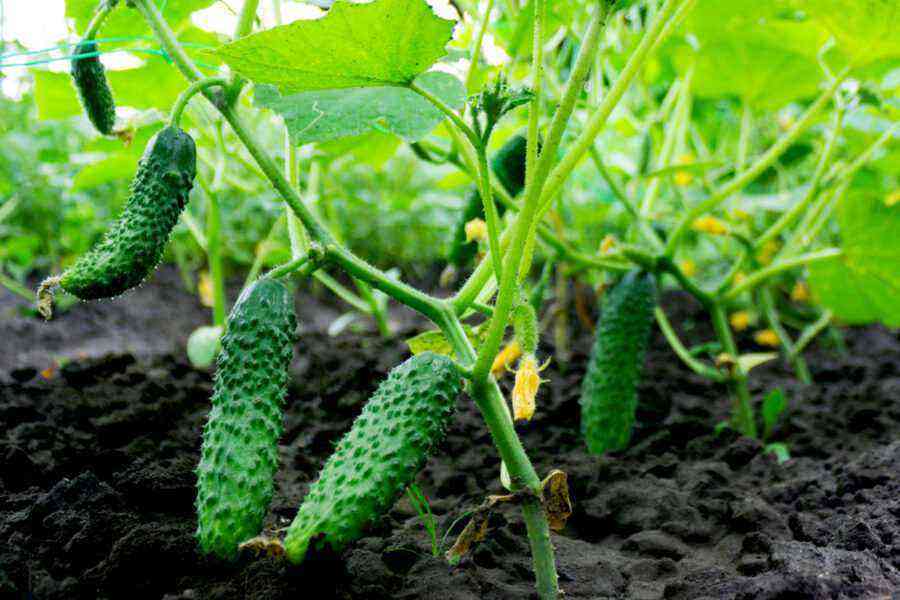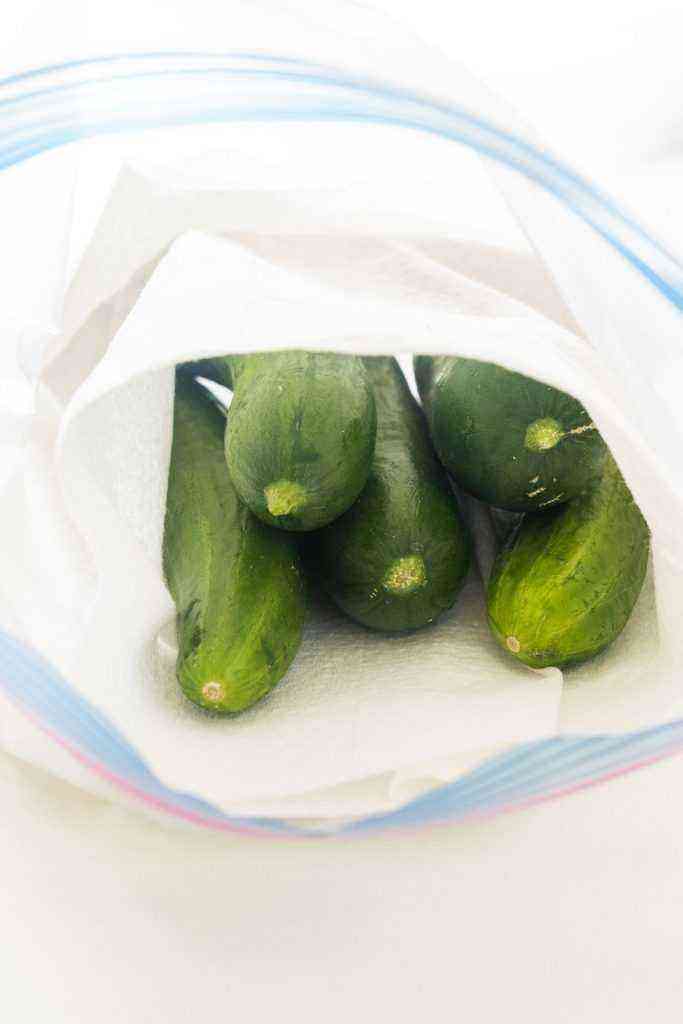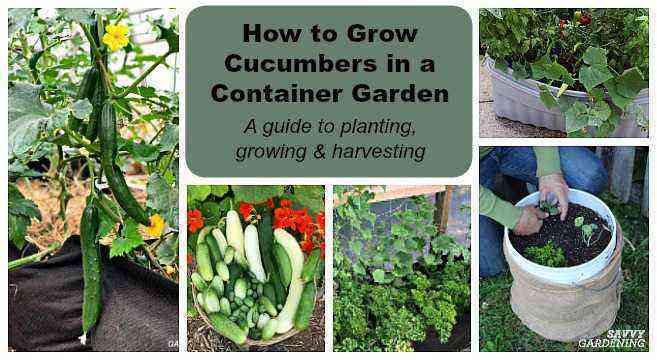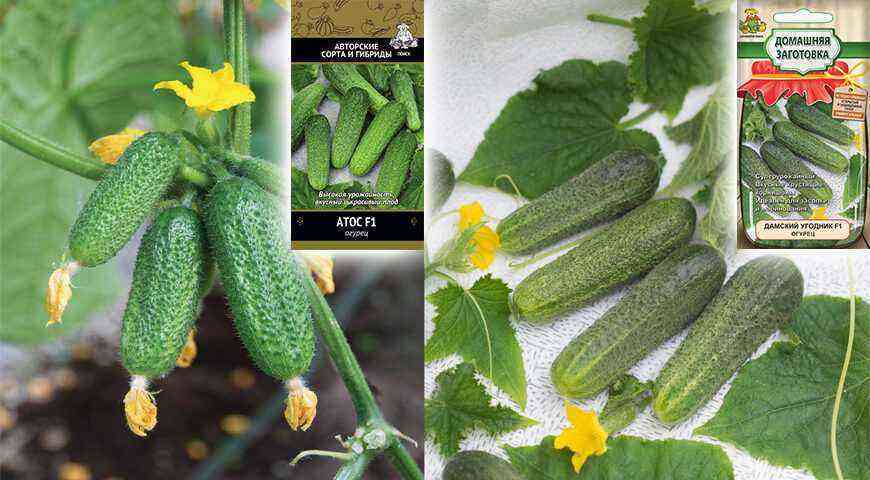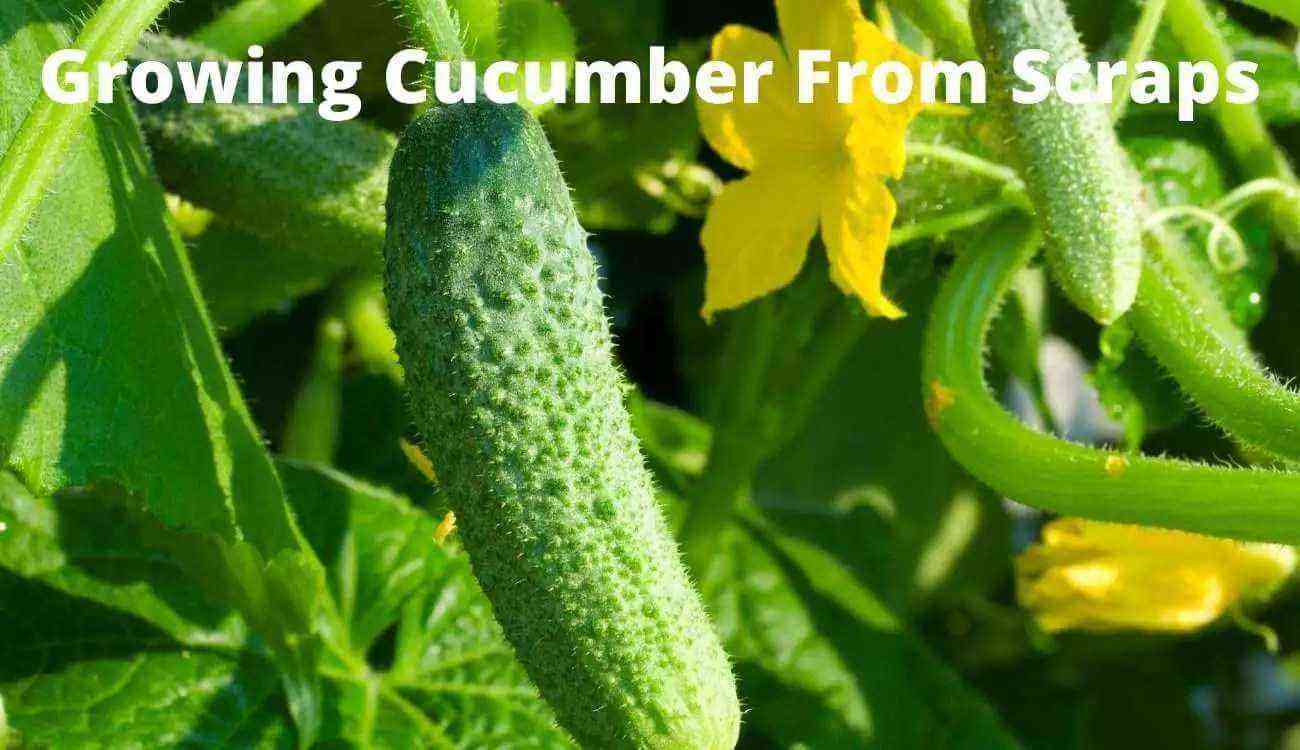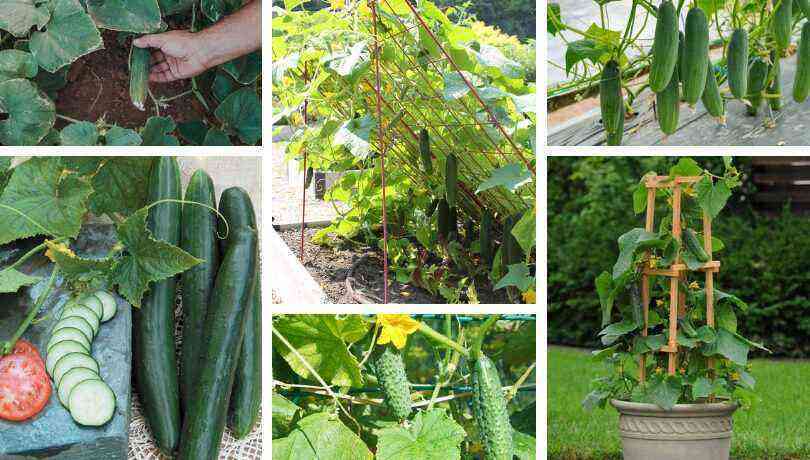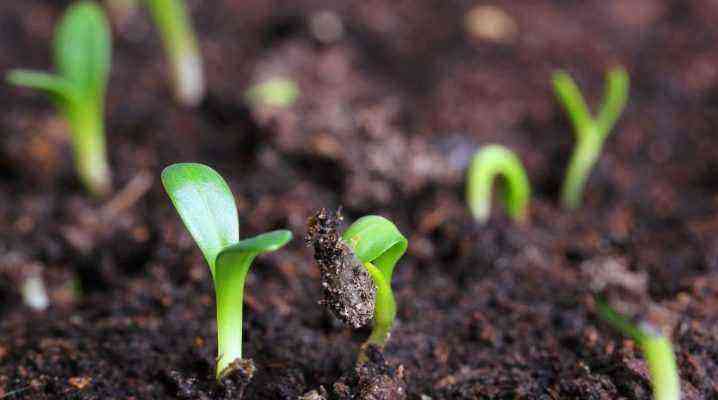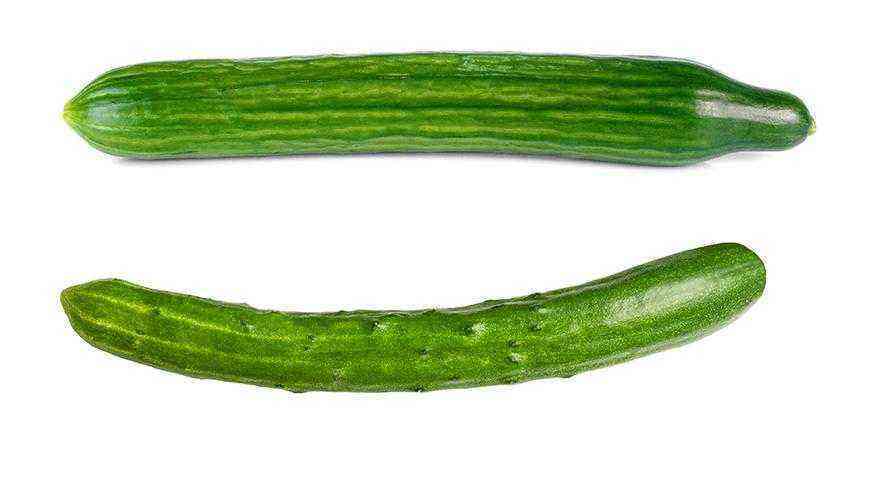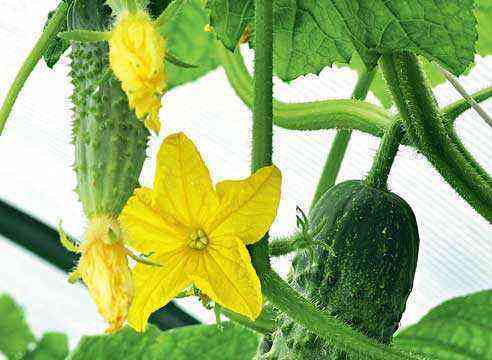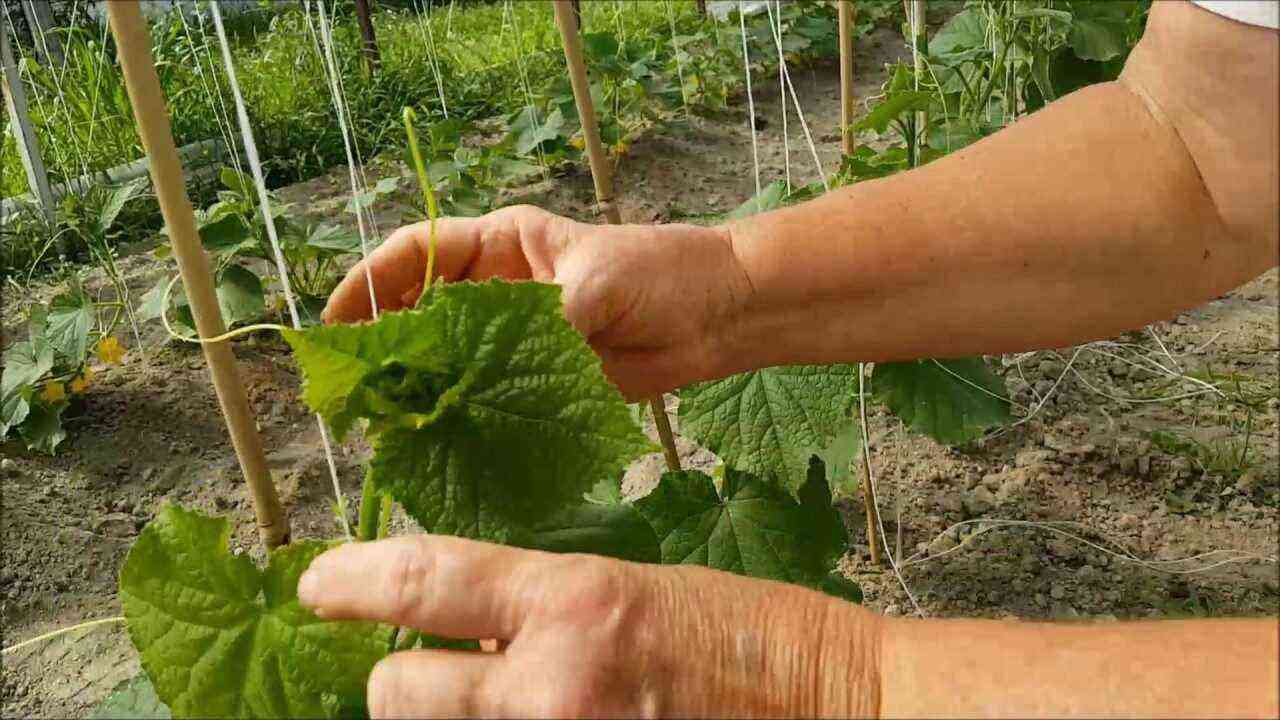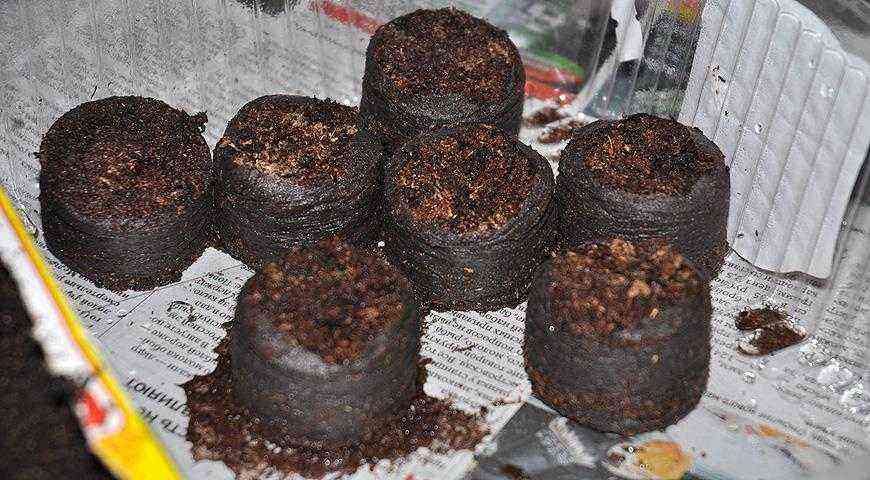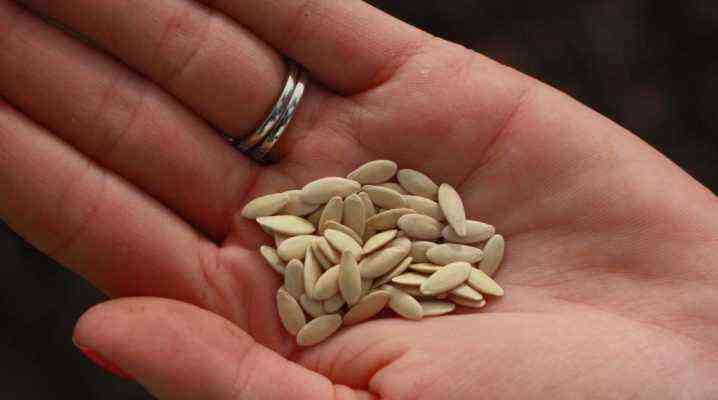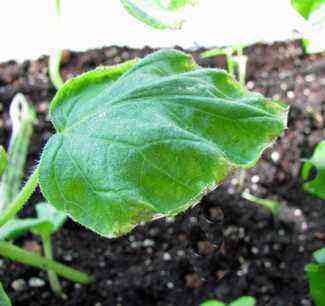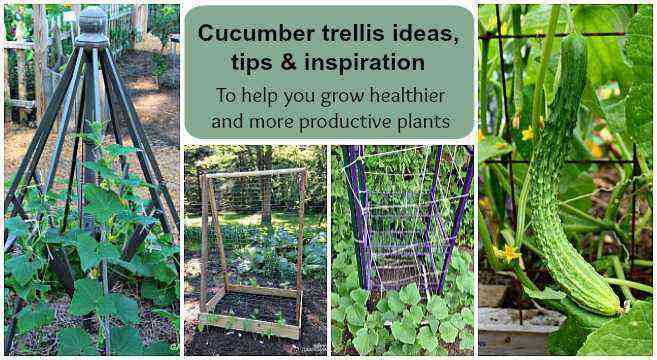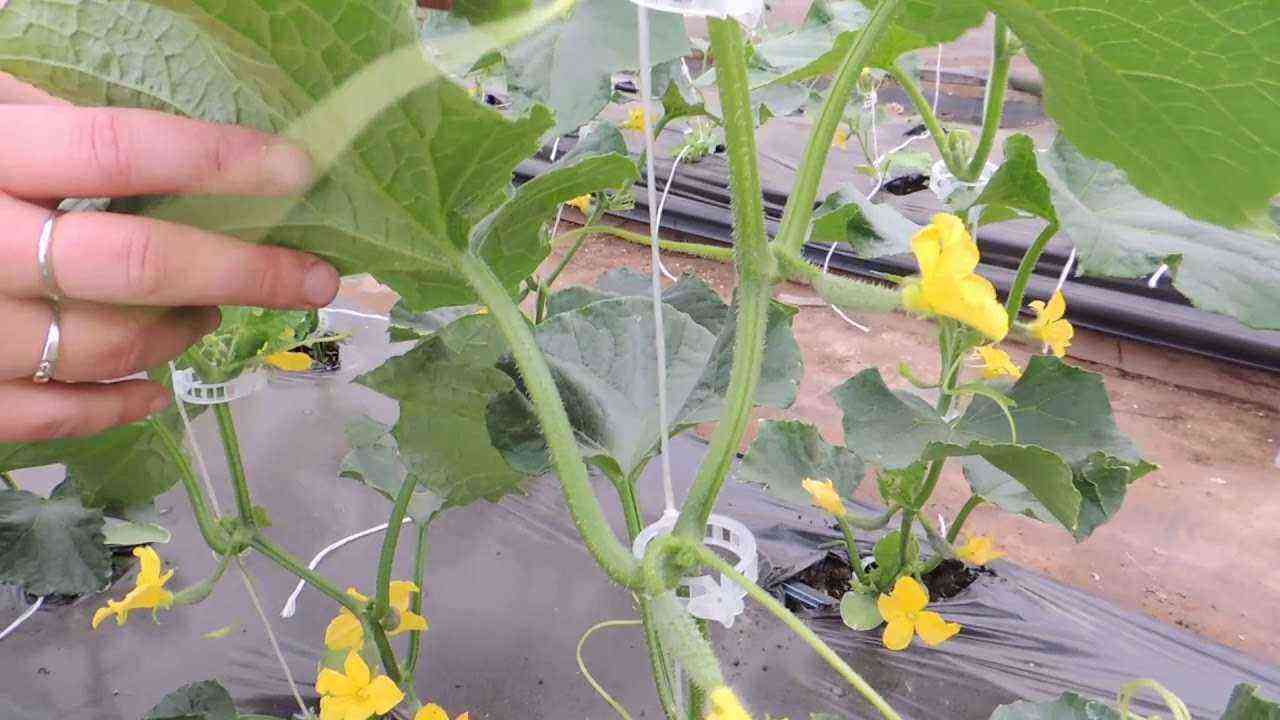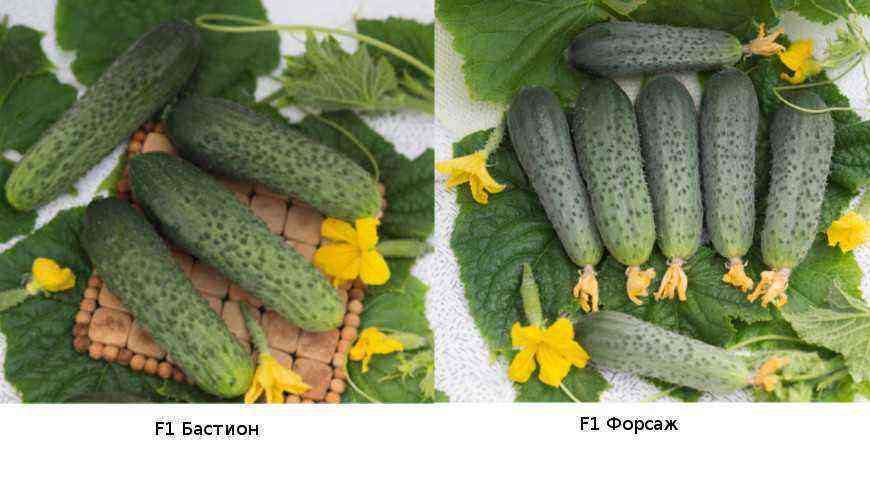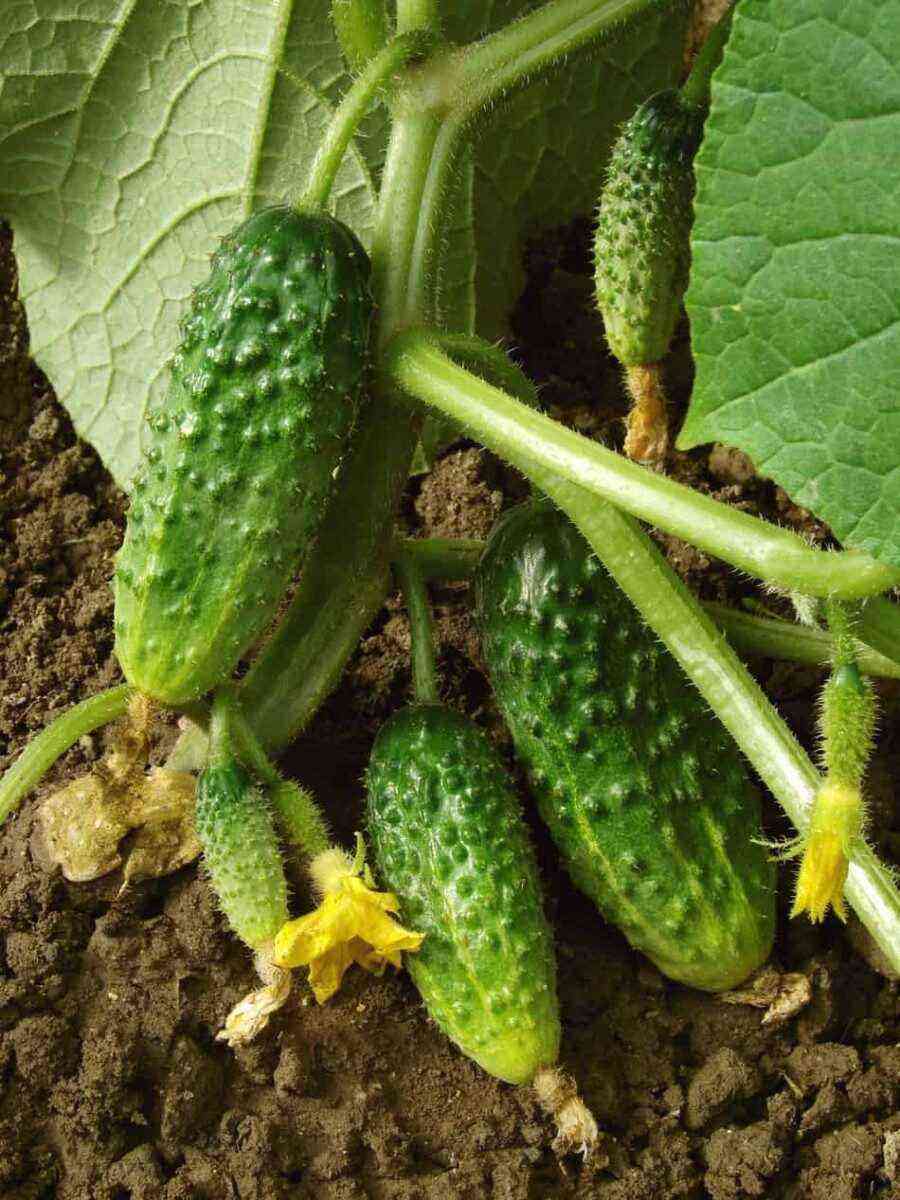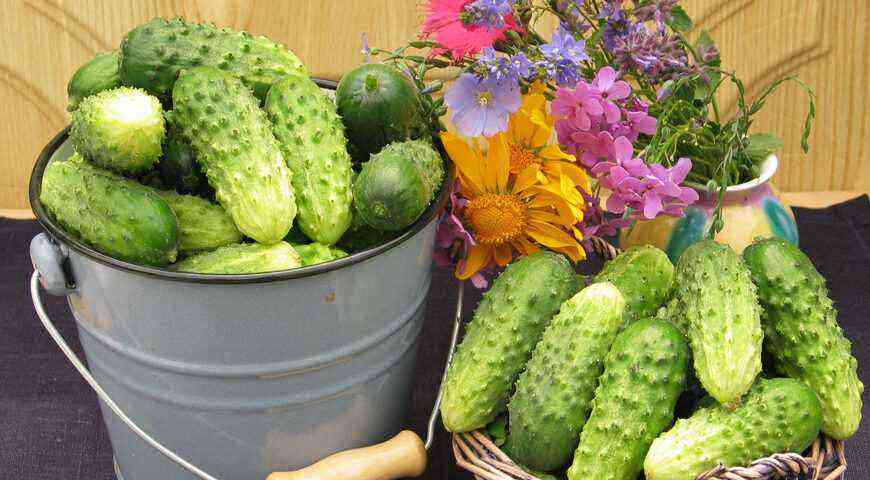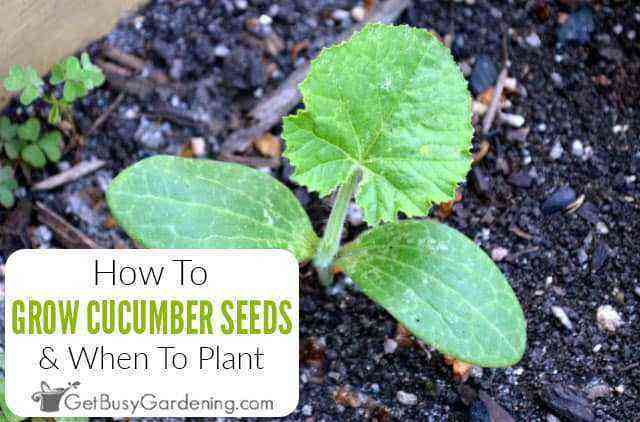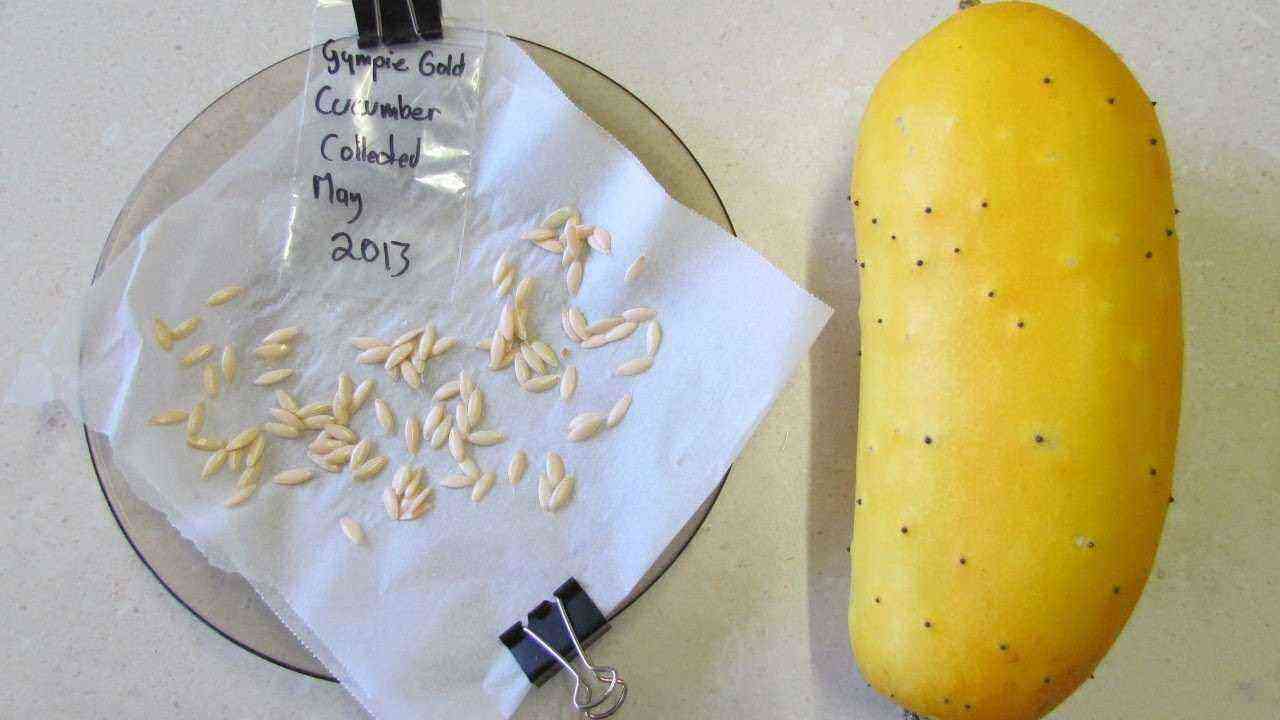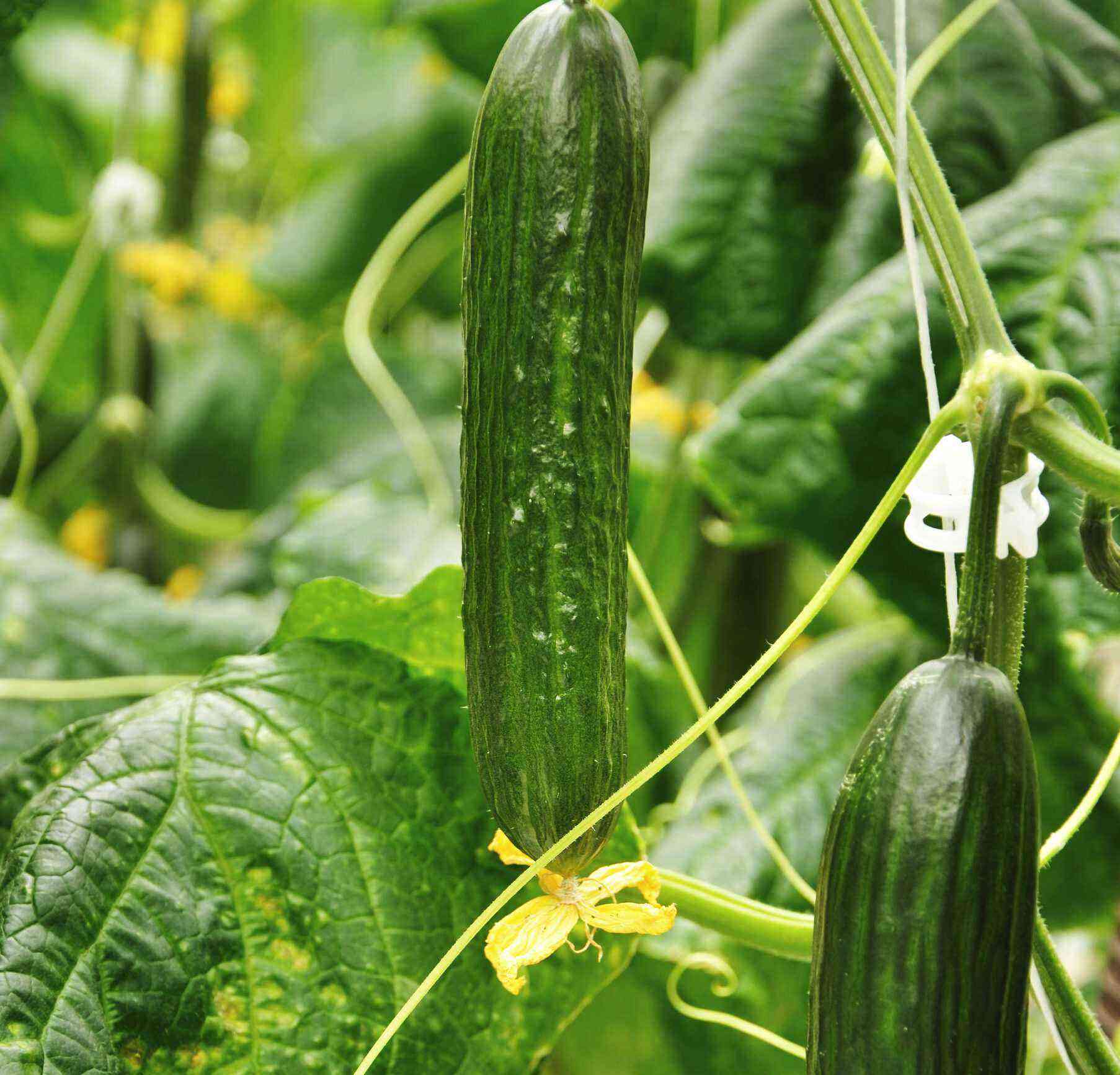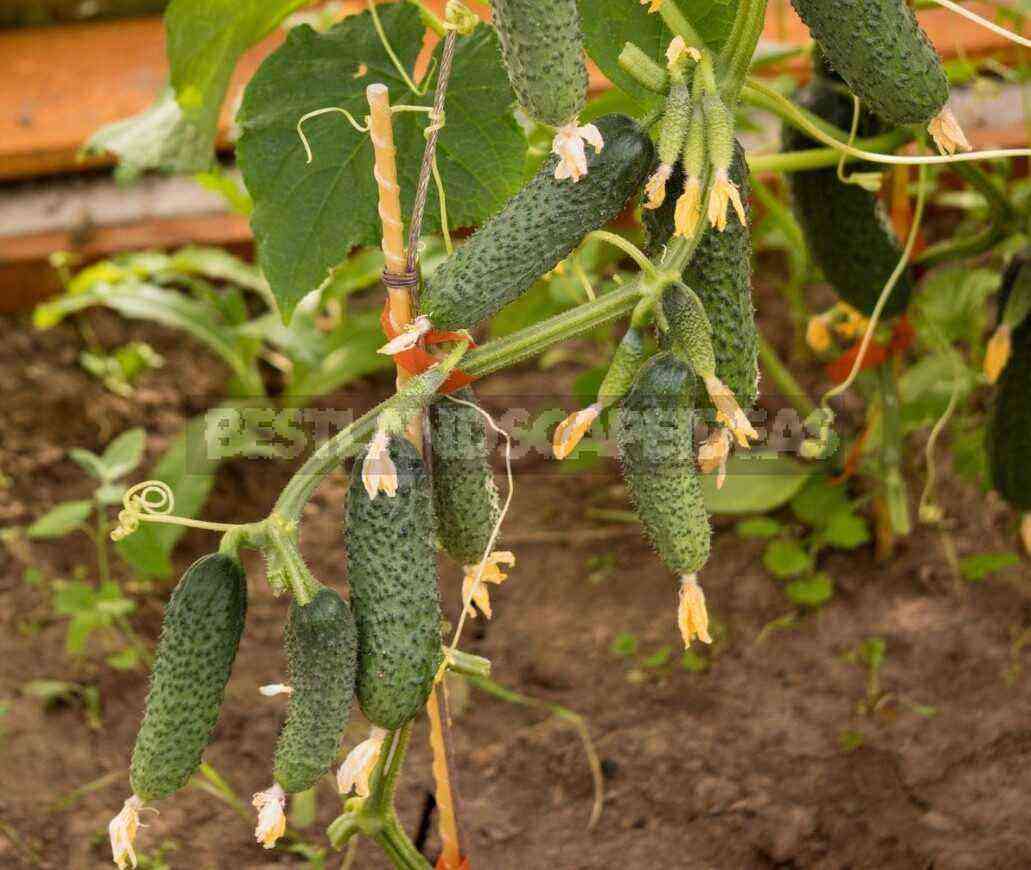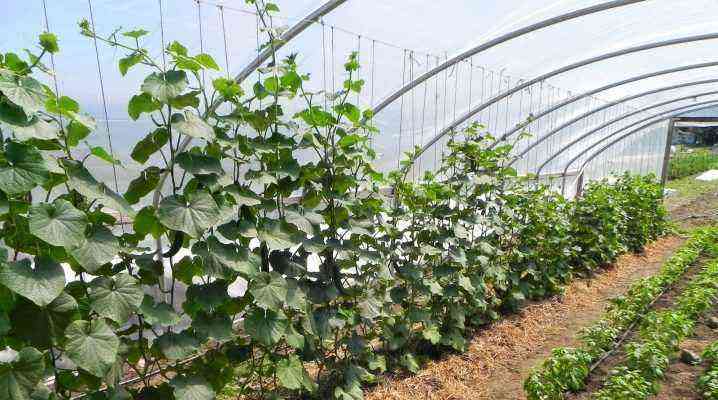
Cucumbers are a popular plant for planting in a country house, garden plot or even a balcony. In this article, we will analyze how to tie up cucumbers in a greenhouse or hotbed, and also look at ways to properly tie up.
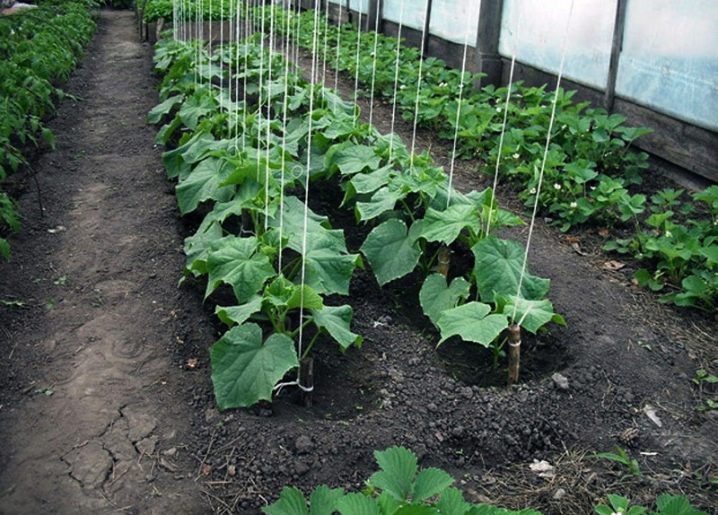
The need for a procedure
The plant is characterized by fast growth rates. As the branches develop, they can intertwine with each other, which affects the health of cucumbers not in the best way. Therefore, they often need to be tied up.
In general, making a garter is necessary to achieve the following goals:
- uniform distribution of branches and bushes themselves;
- the possibility of access of all plants to sunlight;
- the possibility of normal and correct growth and spread of the mustache;
- space saving;
- the preservation of flowers and ovaries to maximize the possible yield;
- free access for full-fledged watering and harvesting of fruits, the optimal process of removing weeds, stepchildren, dried or diseased foliage;
- absence of rotting of leaves and fruits;
- reducing the risk of disease.
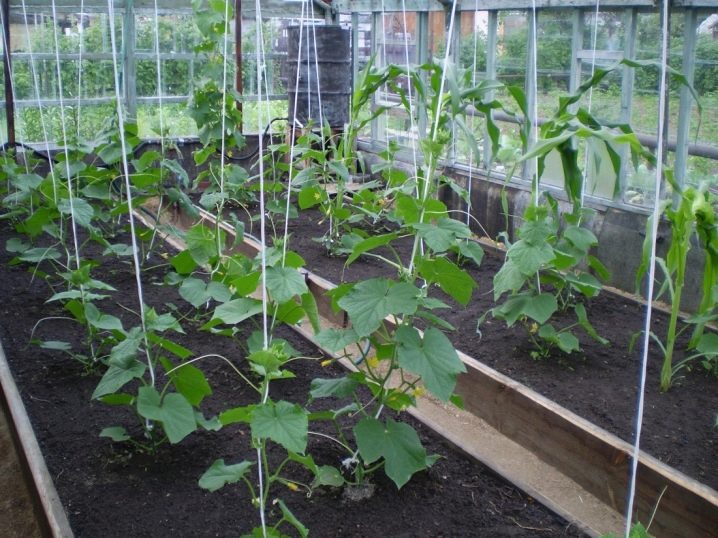
The choice of whether to tie cucumbers or not is left only to the gardener himself. Moreover, different varieties behave differently in a low (untied) position in a greenhouse or in a greenhouse.
Basic rules and preparation
If you still decide to take such a step, you need to know some of the features and devices that gardeners advise for the correct and convenient garter of cucumber branches. Being in a greenhouse, plants experience some difficulties and require special care. First, let’s look at a few basic rules for greenhouse tying.
- The garter is carried out if the plant is sufficiently formed. This is usually the third or fourth week after disembarkation. After this period, experienced gardeners do not recommend the procedure: the branches become brittle and do not withstand deformation well. The length of the shoots should be up to 30-35 cm, they should have at least six leaves on each.
- The plant should not fit snugly to the base. It is enough that it is attached for a while: then the whiskers of the plant will themselves be attached to the base. It also ensures the normal supply of nutrients to the fruits.
- Returning to the fragility and tenderness of the shoots, it is worth noting that the support for them should not be too rough. It can cause harm and contribute to the appearance of wounds on the branches, and this is one of the ways the plant is infected.
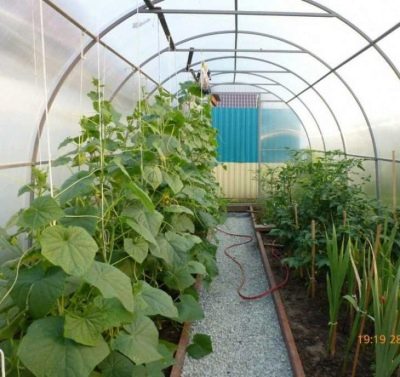
The most common mount consists of a stretched base (arc) and supports. In order for the support to last for a long time and be as comfortable as possible, it is important to use suitable materials.
Usually, the following things can come in handy for construction:
- twine or strong rope;
- mesh made of plastic or metal;
- posts made of wood or metal two meters long;
- hooks;
- fabric in the form of strips (3-5 cm wide);
- pegs;
- hammer and nails;
- pliers.
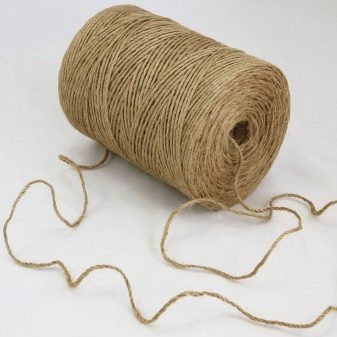
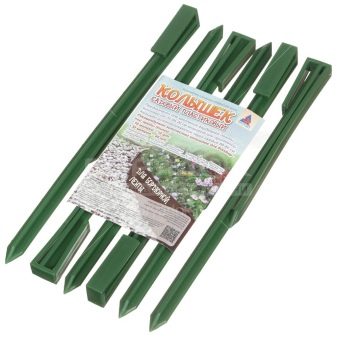
Garter Methods
There are many ways to fix cucumbers conveniently and beautifully with your own hands. Let’s take a look at a few options on how to do it right step by step.
Horizontal
This type of garter is suitable for those who have a relatively low greenhouse and a small number of plantings. In appearance, the design resembles a wall of ropes. The horizontal garter scheme is considered one of the simplest.
Let’s consider it step by step:
- the design consists of high supports and a rope driven into the sides of the ridge;
- it needs to be pulled at a distance of 30 cm from the ground, and it is better if it is slightly wider than the length of the bed;
- at a height of 35 cm, pull the second row;
- moving up at such a pace, adding 5 cm on average, we get a wall for the garter.
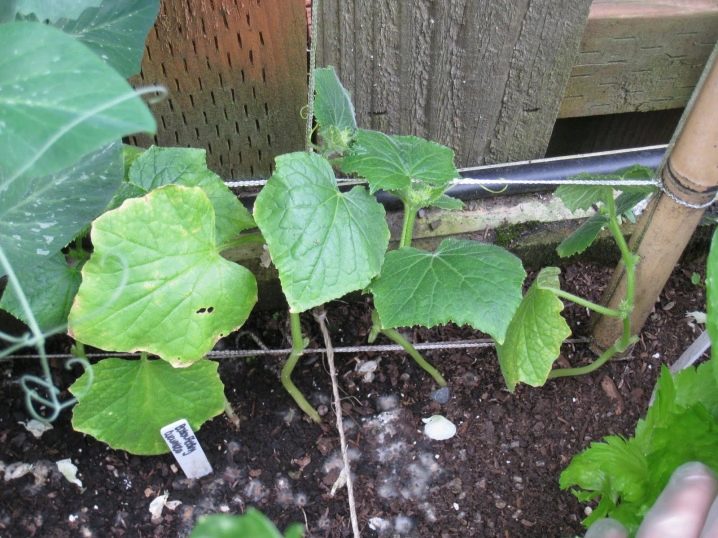
Vegetable shoots are hung on the resulting supports and placed along the ropes, and the winding is carried out clockwise.
At the same time, it must be remembered that cucumber is a branching vegetable, its heavy leaves can “jump” to neighboring steps, leading to tangling of the rows and the shoots themselves. If you have a dense planting of bushes, gardeners recommend either pinching the extra shoots to the rope or removing them. Without pity, all diseased or weak shoots are removed: they will take away from the plant the strength that it needs to form full-fledged fruits.
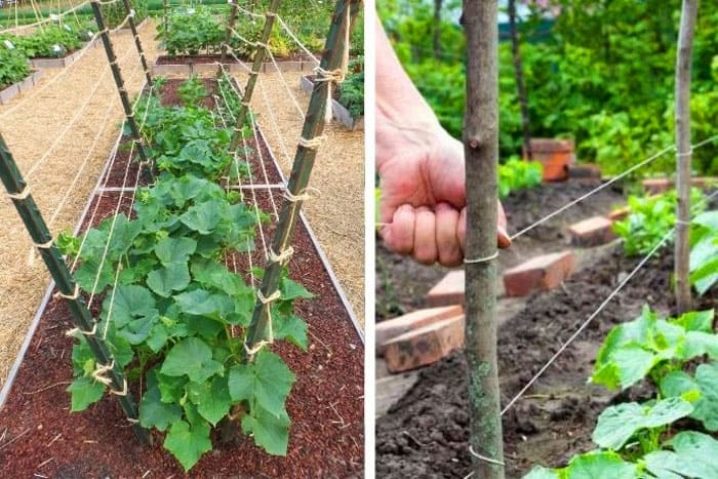
The vertical
The vertical tie is suitable for greenhouses with a ceiling height of at least 2,5 meters. To understand this method, let’s start with the frame. On the sides of the beds, as in the previous version, poles are dug in, each 2 meters long. If the bed is very long, then another such column is installed in the middle. A transverse bar is placed on top and fixed. On this bar, you need to tie several twines at a distance of about 15 cm from each other (the distance may vary depending on how close your fit is). The cuts go down to the very ground and are fixed on it with pegs. Cucumber vines can simply be hung.
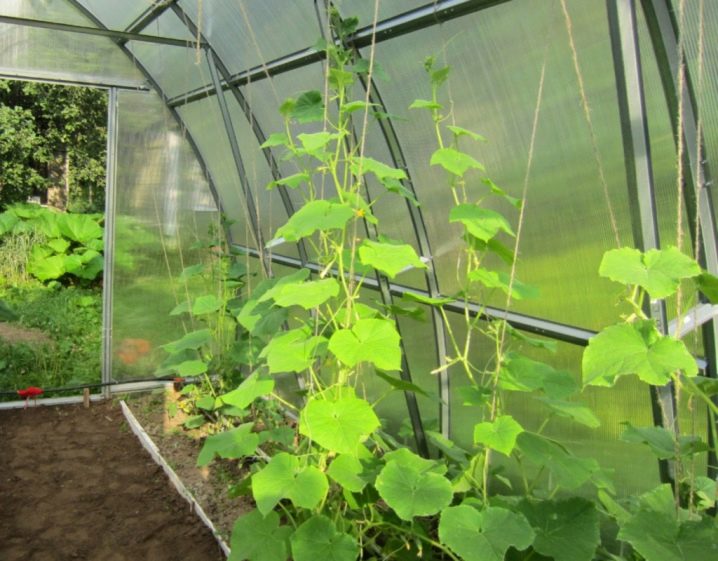
The stem from each bush should go up only along its allotted rope base. To make the design more reliable, you can tie the plant with a piece of cloth (the method is suitable for the option without pegs). Its upper part, which has reached the very top, should be pinched.
In general, this is a very convenient way: the plants are easy to water, they do not interfere with each other, it is convenient to collect a crop that is visible at a glance and notice changes in its health.
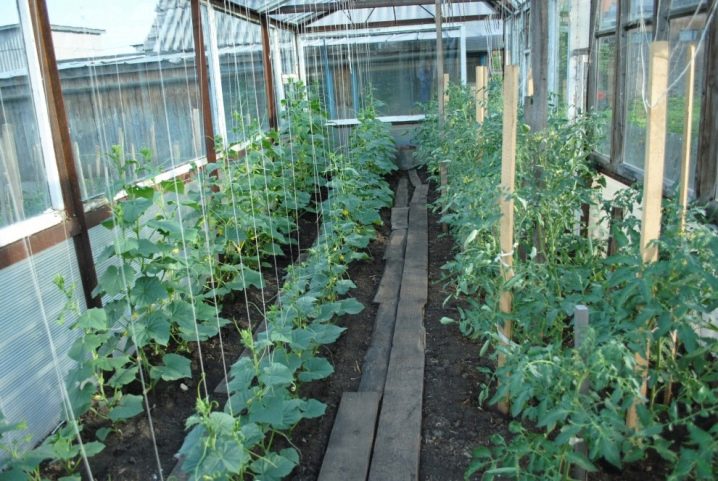
Mixed
Method for skilled gardeners. It is carried out in the period before planting seeds in open ground. The manufactured design is shaped like a cone. Ten metal rods or wooden stakes are dug in along the perimeter of the circle, each – to your landing. Seedlings that have risen and reached 25-30 cm in height are considered ready for garter. It is better to do this with pieces of fabric, twisting the shoot clockwise. Thus, the plants move along an inclined path, forming a cucumber hut.

Arcs
The method involves the use of special purchased, usually plastic U-shaped bases. Most often, this method is used for landing in open ground. Ready-made structures are sold in stores, but instead of them you can install polypropylene tubes and build a canopy yourself.
If you have sufficiently high arcs, you can reinforce the loops to them (you can even use a holder to prevent slipping) and lower the ropes to the cucumbers.
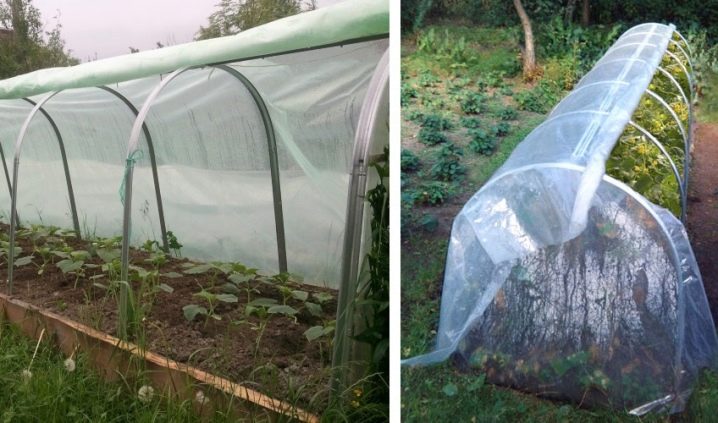
hedge
The method is not for everyone, but we will analyze it too. To create a support, you will need a garden plastic mesh with large cells, which is stretched between the stakes. They are driven in the center of opposite sides of the ridge. It is not difficult to tie bushes in this way: each branch needs its own cell, but this is a slightly more costly method.

Unusual
In addition to the above standard options, consider those that are considered more decorative, but no less practical.
- Barrel method. In a barrel (it is possible without a bottom), we fill up the ground, where we sow cucumbers. Growing lashes descend from the top of the barrel down the wall.
- “Tree”. The lower part of one or more bushes (the one that is blinded, which will be discussed below) is tied to a vertical support. Several ropes are tied to it in advance at an angle of 60-70 degrees down. Next, cucumber lashes are simply twisted on them. It is better if there are 1-2 more ropes than the branches of the plant.
- Interesting options are obtained when using twine. It in itself is considered as an independent material in the manufacture of supports. Twine thread can be tied to hooks attached to a beam under the roof of the greenhouse (if there is one, that is, of course, there is a beam). The free lower part is tied to the bush in the place of the third leaf. In the absence of a beam, it is quite possible to tie the twine to pegs placed inside the greenhouse.
- Another way that gardeners do not shy away is the use of trellises. A frame is made with an upper bar and two side bars 2-2,5 m long. This is the future basis. A mesh is formed and nailed from a single fabric field with cells or from sewn pieces of fabric. Similar options are the construction of a lattice of rods and branches, free from bark and knots, or from thin wooden slats.
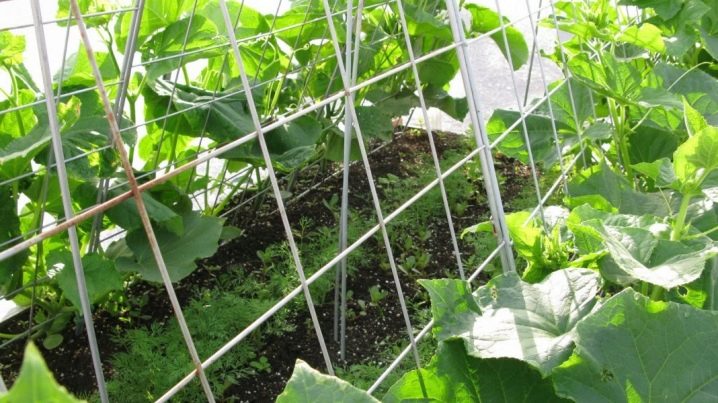
For a polycarbonate greenhouse, any of the garter methods is suitable. Focus on your area and preferences.
Blindness
After the construction of any type of the above structures and the garter, the ascended cucumbers should be “blinded”. This is necessary to stimulate the growth of those parts of the plant where the ovaries will form, as well as to strengthen them in general. The process is quite simple: the first flowers, leaves and shoots are removed at a level of 30-40 cm above the ground and below. The remaining shoots develop freely until new ovaries appear. In the future, they need to be carefully tied to the main stem.

Stepchildren should not lean at an angle of 65 degrees or more with respect to the main branch: this reduces the chances of the stem surviving.
Almost all of the above garter methods are suitable for growing in a greenhouse or greenhouse (except for cone-shaped and those where planting in open ground is supposed). When planting, be guided by the variety of vegetable, the volume and area of the greenhouse or plot, the materials and means that are available.

Possible mistakes
Beginner gardeners cannot always tie correctly without the supervision of a more experienced curator and only do it the second or subsequent times. This is normal, but let’s look at some errors to avoid this.
- Timing. As mentioned above, in cucumbers, a favorable period for the garter needs to be “picked up”. A plant that is too tall is much more difficult to move or force to grow in a certain direction. The optimal length is 20-30 cm.
- Incorrect direction of growth. The plant spins clockwise for a reason: even ancient people believed that everything growing moves and develops in this direction. When twisting counterclockwise, the bushes grow worse.
- Mount. If the top of the trunk suddenly dried up, then this is the result of an incorrect, too tight garter. The stem growing and increasing in thickness is simply transferred. A slip knot is also a bad option. Ideally, when the distance between the plant (stem) and the support reaches a diameter of one finger or a little less. Tie knots in the direction of the support.
- Materials. Experienced gardeners do not recommend using metal elements such as wire or grating.
